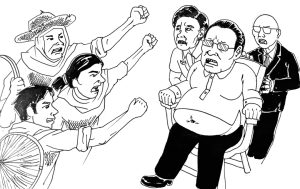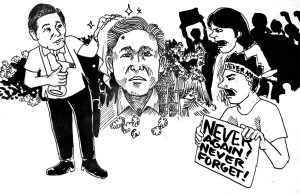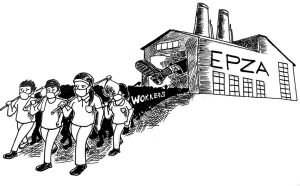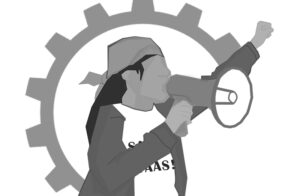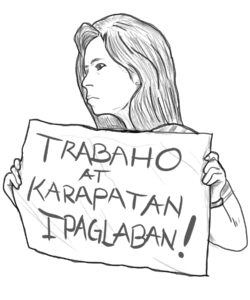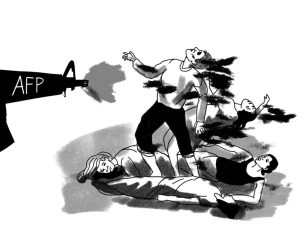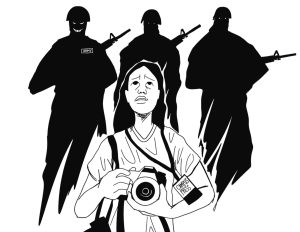Usury: extortion in the countryside

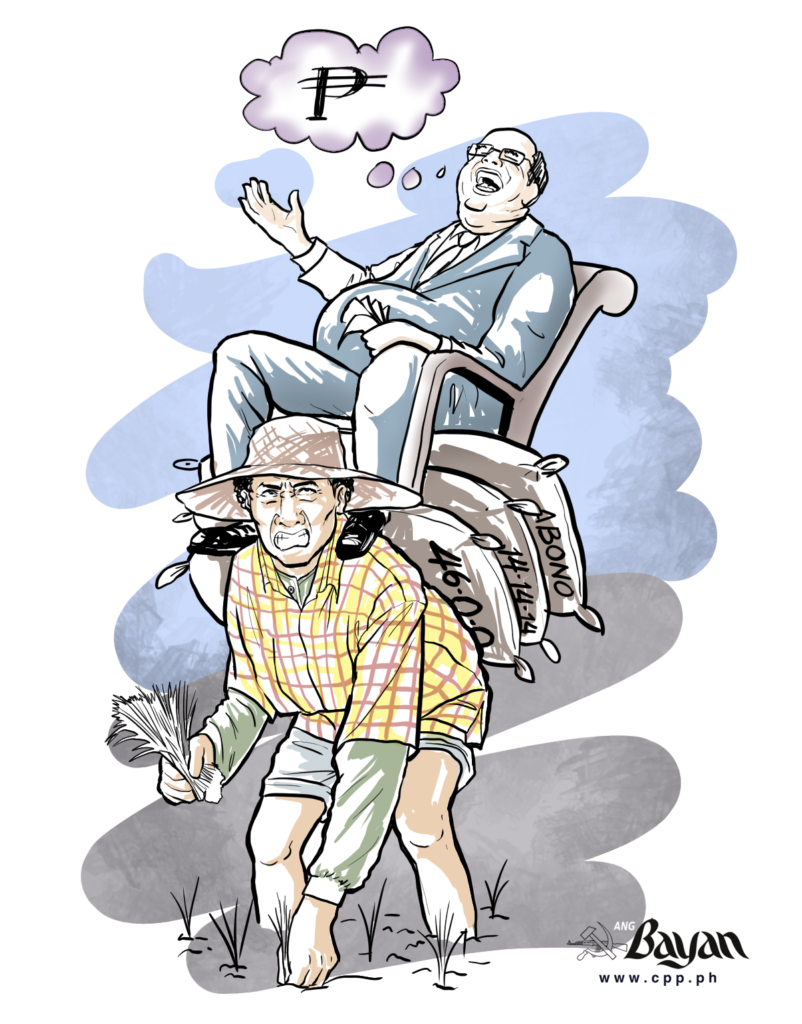
Almost all lower and middle peasants borrow money to defray their production costs. This is because they lack capital for increasingly expensive imported production inputs. The state provides no subsidies for agricultural production in the Philippines (unlike Vietnam). Most farmers suffer from falling livelihood, and are being pushed to the brink of bankruptcy. This predicament makes them even more vulnerable to intensified extortion by usurers in the form of onerous interests on debt.
Squeezed by microfinance
In Mindoro paddies, farmers typically borrow from microlending agencies, apart from bank. While banks charge 4% interest, microlending agencies charge up to 15% per harvest.
On average, they need to borrow up to ₱90,000 from commercial banks and microlending agencies in order to plant rice on 1.5 hectares of land. In a planting cycle, a farmer spends more than ₱99,000 to produce 130 sacks of rice. If farmgate prices are at ₱14 per kilogram, he can earn a total of ₱100,100. After subtracting production costs, he will have ₱968, or a mere ₱8 per day for four months of farming. His losses will prevent him from paying his original debt.
Still, microlending agencies weekly collect loan payments and interests using aggressive methods. To enforce collections, they “organize” farmers in groups or according to their religion. In addition to collecting debt payments, these charge mandatory “insurance” and “savings” to serve as “advanced payment” for subsequent loans. Farmers cannot use or withdraw these for their needs.
Farmers will then have to borrow from other microfinance agencies to pay their debts, and to use for the next planting cycle. This situation ultimately leads to dispossession of their land and their other means of production.
Microlending in the Philippines started in the 1990s, promoted by the World Bank and Asian Development Bank. To this day, these are the biggest source of capital, and make the largest profits. The ADB-funded Center for Agriculture and Rural Development (CARD) has around 1.3 million borrowers across the Philippines. On average, farmers alternately borrow from 2-3 microlending agencies to cover their expenses and pay for their current loans.
Merchant-usurer exploitation
Cagayan and Isabela are swarmed by merchant-usurers, a type of usurer that arose from operations of agro-chemical monopoly capitalists and large compradors involved in hybrid seeds. In the region’s history, these usurers emerged and grew in number during the Marcos dictatorship when the use of foreign high-yield variety (HYV) seeds was pushed under the so-called “Green Revolution” program.
In northwestern Cagayan, loan interests reach 25%-35% per planting cycle or 5%-7% per month. Meanwhile, monthly interests in the plains of south Isabela is 5%-10%. If principal and interest payments are not made by the fifth month, an additional 5% on the principal and accumulated interests will be charged.
Farmers are not relieved from payments even during disasters. There are even times when usurers raised interest amid widespread destruction and tragedy caused by severe storms, floods or rainfall.
Always attached to loans is the condition that the farmer’s produce be sold only to the lender. In this scheme, they are further exploited through various forms of commercial fraud. The merchants themselves set the price of the products and dictate what type, brand and price of corn seed, fertilizer, pesticides and herbicides the farmers will buy from them.
Most loan sharks require collateral, usually the farmer’s land or carabao. Borrowers are often subjected to vilification, such as cursing, bawling and sometimes physical assaults.
Buried under the pabutang system
While usury by merchants and microlending agencies is rampant, the traditional rural moneylenders—the landlords—have not disappeared and still are the most ruthless. This is evident in Masbate, where farmers who already own land are buried in debt under the “pabutang” system.
A farmer usually spends ₱26,400 to harvest 48 sacks of rice from one hectare of land. Under the pabutang, the farmer will borrow ₱10,000 to cover production costs. The farmer will pay 20 sacks of rice for this. At a selling price of ₱1,000-₱1,100 per bag of rice, usurious landlords make 100% profits.
Eight more sacks of rice will be subtracted from the harvest as payment for the three sacks of fertilizer borrowed. At the end of the harvest, the farmer has only eight sacks of rice left. He will have to stretch these until the next crop cycle.

